VAIO S Laptops Updated With 8th Gen Core CPUs & TruePerformance to Prolong Turbo Time
by Anton Shilov on February 12, 2018 1:00 PM EST- Posted in
- Notebooks
- Systems
- Intel
- Laptops
- VAIO S
- VAIO
- Core 8th Gen
- TruePerformance
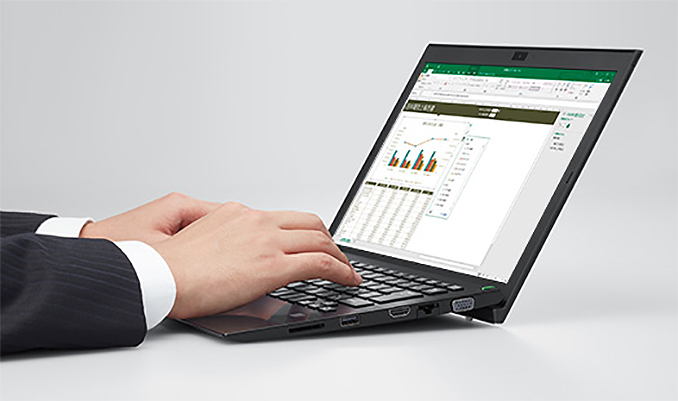
VAIO has updated its popular 13-inch VAIO S laptops sold in the U.S. with Intel’s latest 8th Generation Core i5/i7 processors featuring four cores. Besides new CPUs, the systems have also added the company’s new TruePerformance technology, which is designed to maintain a higher turbo boost frequency for longer periods of time. The new VAIO S also feature a fingerprint reader and a TPM 2.0 module, emphasizing their business nature. Meanwhile the 2018 VAIO S retain their “classic” chassis along with a set of connectors, so they do not support modern headers, such as USB Type-C.
The new VAIO S laptops are based on Intel’s quad-core Core i5-8250U or Core i7-8550U processors with Intel UHD Graphics 620 accompanied by 8 – 16 GB of LPDDR3-1866 memory and a PCIe SSD featuring 256 GB, 512 GB or 1 TB capacity. One of the key features of the 2018 VAIO S notebooks is the TruePerformance technology that promises to maximize time that a CPU works at increased frequencies, giving VAIO a competitive advantage over other laptops based on the same processor.
VAIO’s TruePerformance tech is a combination of VAIO’s increased CPU power limits and a cooling system that can handle the increased heat. For reference, Intel’s Turbo Boost 2.0 technology increases the CPU frequency in increments of 100 MHz when an operating system requests a higher performance state. Typically, the amount of time that a CPU can work at its maximum Turbo Boost 2.0-defined frequency is about 20 to 30 seconds (according to VAIO), then it has to reduce its clocks because of thermals and other factors. VAIO claims that even if it increased the amount of time a processor operates at its TB 2.0-defined peak to 40 seconds, this would not bring many benefits to end users.
Instead, engineers from VAIO increased the base TDP limits of Intel CPUs to prolong the amount of time the chips operate at an above-nominal frequency (or frequencies), but below the TB 2.0-defined peak frequency. The company does not say whether it boosted TDP of Intel’s 8th Generation Core i5/i7 CPUs all the way to 25 W from 15 W (an increase allowed by Intel and called configurable TDP-up) which would explain and define higher frequencies. Meawhile, VAIO admits it needed to redesign its CPU VRMs as well as its cooling system to remove the extra heat. The new cooler has a thicker vent (and probably an enlarged radiator) as well as apply a new fan rotation speed control algorithm to ensure that the chips do not overheat.
Based on graphs demonstrated by VAIO, its TruePerformance technology can increase a CPU performance in Cinebench by 11% ~ 13% when compared to the same CPU without the tech. Meanwhile, the increased TDP limit can also lift iGPU performance by 4.5% ~ 8.6%. While performance increases are not radical, they add value to VAIO’s new PCs.
Now, back to the laptops themselves. This year’s VAIO S systems are outfitted with a 802.11ac Wi-Fi + Bluetooth 4.1 module, a GbE connector, a 0.92 MP webcam, an SD card reader, a fingerprint reader, a TPM 2.0 module and so on. Configuration of I/O ports remains unchanged from the original (non-Sony) VAIO S model launched in 2016: three USB 3.0 ports (including one always-on USB 3.0 for charging), a TRRS audio connector, an HDMI and a D-Sub output. When it comes to battery life, the new model S can work for approximately 8 hours 45 minutes on one charge, depending on the model and usage, which is in line with previous-gen VAIO S systems, but is hardly impressive when compared to other modern laptops.
As for display and physical dimensions, the new VAIO S features a 13.3” screen with a 1920×1080 resolution, it weighs just about a kilogram (2.34 lbs) and is only 15 – 17.8 mm thick. When compared to the 2016 VAIO S, the chassis got ~1.8 mm thicker at its thinnest point and ~0.2 mm thinner at its thickest point, which is hardly a big deal for portability.
| The VAIO S 2018 at a Glance | ||||||
| VJS132X0611S | VJS132X0511S | VJS132X0411S | VJS132X0311S | |||
| Display | Size | 13.3" | ||||
| Type | IPS | |||||
| Resolution | 1920×1080 | |||||
| CPU | SKU | Core i5-8250U | Core i7-8550U | |||
| Cores/Threads | 4C/8T | |||||
| Cache | 6 MB | 8 MB | ||||
| Frequency | Base | 1.6 GHz | 1.8 GHz | |||
| cTDP-up | 1.8 GHz (?) | 2 GHz (?) | ||||
| Turbo | 3.4 GHz | 4 GHz | ||||
| TDP | TDP | 15 W | ||||
| cTDP-up | 25 W (?) | |||||
| GPU | SKU | Intel HD Graphics 620 (GT2) 24 EUs, Gen 9 |
||||
| Base | 300 MHz | |||||
| Turbo | 1.1 GHz | 1.15 GHz | ||||
| DRAM | 8 GB LPDDR3-1866 | 16 GB LPDDR3-1866 | ||||
| SSD | 256 GB PCIe | 512 GB PCIe | 1 TB PCIe | |||
| USB | 3 × USB 3.0 Type-A (one w/charge) | |||||
| Card Reader | SD card reader | |||||
| Wi-Fi | 2×2 802.11ac | |||||
| Bluetooth | 4.1 | |||||
| Ethernet | GbE | |||||
| Display Outputs | D-Sub HDMI |
|||||
| Audio | Stereo Speakers Microphone TRRS audio jack for headsets |
|||||
| Webcam | 0.92 MP webcam | |||||
| Fingerprint Reader | Yes | |||||
| Battery Life | 8 hours 45 minutes | |||||
| Dimensions | Width | 12.61" | 32 cm | ||||
| Depth | 8.53" | 21.66 cm | |||||
| Thickness | 0.59" - 0.7" | 15 - 17.8 mm | |||||
| Weight | 2.34 lbs | 1.06 kg | |||||
| Colors | Silver | |||||
| Price at Launch | $1,199 | $1,599 | $1,899 | $2,199 | ||
The new VAIO S will be available in the U.S. this month at MSRPs starting from $1,199. It is noteworthy that in Japan VAIO offers two business-oriented VAIO S lineups — with 11.6” and 13.3” displays (there is also a family with a 15.5” screen, but it is barely aimed at business customers). Both VAIO S11 and S13 are based on Intel’s latest quad-core Core i5/i7 8000-series processors, come with optional LTE modems and even feature spill-resistant keyboards that are never mentioned in case of the U.S. VAIO S 2018.
Related Reading:
Source: VAIO


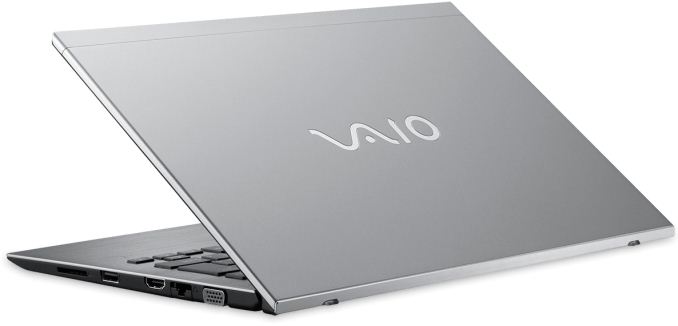
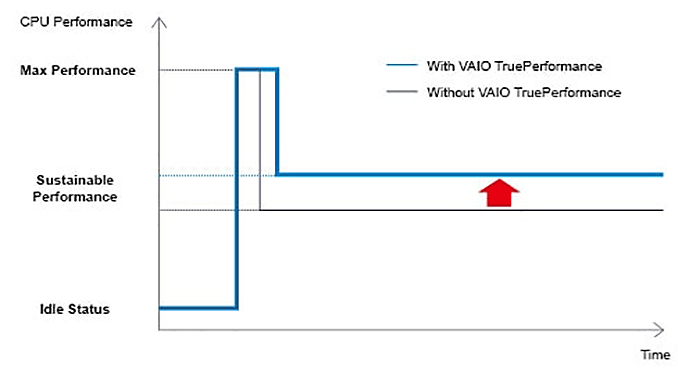
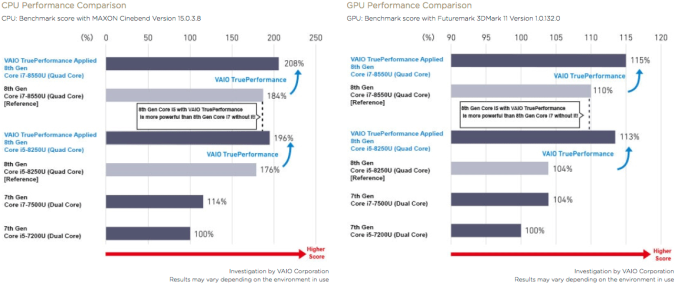
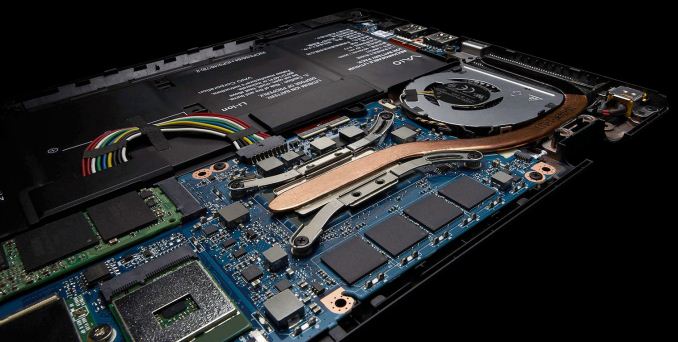









11 Comments
View All Comments
Flunk - Monday, February 12, 2018 - link
I like how they're trying to spin the fact that they're just now getting around to engineering proper cooling for their notebooks (or at least they're claiming they do).Previous VIAO notebooks have been pretty bad in this regard, although the entire thin and light notebook class is generally pretty bad for overheating. So much so that it rarely matters if you get the most or least expensive CPU available because it'll throttle either way.
anactoraaron - Monday, February 12, 2018 - link
When vaio was a part of sony, yes they were awful. Vaio is a stand alone company and has been for a few years. And they are definitely better all around since that change.Their cooling is top notch, they are the only manufacturer to fit a full 45w cpu in a tablet (Vaio Z Canvas), and I've never had any issue with overheating. Hottest I've seen it get converting raw images in lightroom is 88c. Compare that with the surface book I had (1st gen) that would hit 96c (with just a dual core cpu).
I really wish AT would have reviewed the Z Canvas, at its time it was an engineering marvel with its 3 cooling fan system and a no compromise 45w hq4770 with iris cpu, factory calibrated 96% argb display, samsung sm951 pcie ssd (256, 512 or 2x 512 config). It still does everything I would ever need other than games.
Samus - Monday, February 12, 2018 - link
I hope so. I lost faith in Sony VAIO's after their adventures with Crusoe CPU's and their poor cooling designs of Pentium 4 notebooks...but I guess everyone's P4 notebooks were pressure cookers.They were always pretty machines but the support was awful and the durability was pretty bad.
tipoo - Monday, February 12, 2018 - link
This is similar to what Apple does, isn't it? They remove the wattage caps and just let the chips run up to the tjunction max temp until the cooling system can't keep it there anymore before dropping down from turbo.willis936 - Monday, February 12, 2018 - link
Apple? You mean pretty much every laptop made in the past four years right?nerd1 - Monday, February 12, 2018 - link
Apple? Their DESKTOP throttles, let alone laptops.nerd1 - Monday, February 12, 2018 - link
Japanese battery rating method is uttely meaningless... if this laptop is rated 8hr, i bet the actual battery capacity is less than 40Wh.mr_tawan - Monday, February 12, 2018 - link
I just saw one of the S11 in person this weekend. It's kinda rare sight, as it's not available in my country. It looks really good.I'm a big fan of VAIO. I own one of the 2012 VAIO S which's still alive and kicking until this day (despite my abuse). I wish one day I can get another VAIO machine.
timecop1818 - Tuesday, February 13, 2018 - link
I'm surprised nobody complained about VGA port in 20180iron - Wednesday, February 14, 2018 - link
As business is their target customer, having VGA port (without adapter) is one of the main selling point. A lot of business still uses VGA connector for their projector.